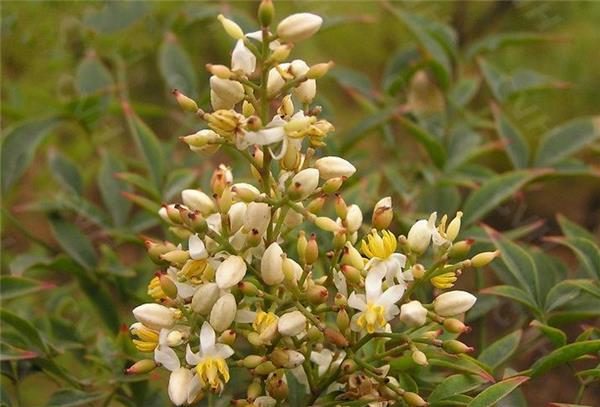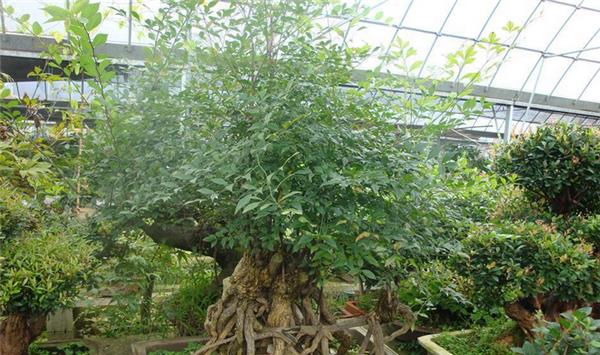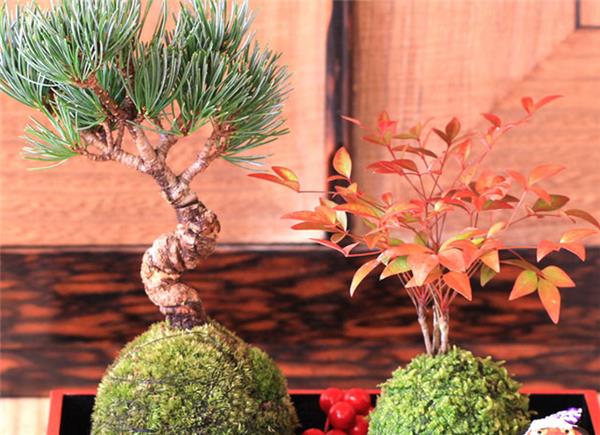How to cultivate bonsai of Phyllostachys pubescens
Southern Phyllostachys pubescens is one of the favorite ornamental plant species for bonsai lovers. Its branches are as tall and straight as bamboo, its feathered leaves are beautiful, it turns red in autumn and winter, it is extremely gorgeous, and it is full of red fruit, bright and dazzling, so it is of great ornamental value. Let's take a look at the breeding methods of Phyllostachys pubescens:

How to cultivate bonsai of Phyllostachys pubescens
Nantianzhu prefers a warm and humid semi-shady environment and is slightly hardy. During the growing period, it can be maintained in a well-ventilated semi-shady place outside to avoid hot sun exposure, otherwise it will cause scorch at the edge of the leaf, but it should not be too shaded, so as to avoid rare or even infruitful results. Watering can be seen dry and wet, less watering in flowering to prevent falling flowers, late autumn and winter should also be controlled watering, summer high temperature should also often spray water to the plant and around, in order to increase air humidity, so that the leaf color moist. During the peak growth period from May to June, thin fertilizer was applied twice a month. During the growing period, remove the unnecessary branches from the sprouting roots in time, and carry out a comprehensive refurbishment after autumn, cutting off the disease and insect branches, dry and withered branches and other branches that affect the shape, so as to shorten the overlong branches so as to dwarf the plants. and conducive to the germination of new branches in spring. Winter in the cold indoor winter, in the warmer south can also be in the outdoor shelter to the sun to winter. The basin should be changed every 2 to 3 years in spring, and the sandy soil with rich humus, loose and fertile soil and good drainage and permeability should be used.

Second, the propagation mode of Phyllostachys pubescens.
1. Seed propagation
The seeds were collected in autumn and sown immediately after harvest. On the whole seedbed, ditches were opened according to the row spacing of 33 cm, and the depth was about 10 cm. The sowing rate was 90 Mel 120 kg per hectare. After sowing, cover the plant ash and fine soil and press it tightly. The seedlings grow slowly in the second year, so weeding, loosening the soil and applying light human and animal manure should be done frequently. From now on, we should pay attention to ploughing and weeding every year. Topdressing can be planted in the nursery after 3 years of cultivation. Transplanting should be carried out after the rain in spring. The distance between plants and rows is 100 cm each. Before planting, dig up the seedlings with soil. if you can't take a taxi, you must use thin mud pulp roots to survive easily after planting. Phyllostachys pubescens fruit
2. Ramet propagation
In spring and autumn, the clump-shaped plants were dug out, shook off the soil, and cut off from the weak combination of roots, with 2 or 3 stems in each clump, with part of the root system, and at the same time cut off some large pinnate compound leaves, planted on the ground or on the pot, and then blossomed and bear fruit after a year or two of culture.
3. Field management
In the first year after planting, weeding and topdressing were ploughed and fertilized in spring, summer and winter respectively, and the missing seedlings should be replanted at the same time. From then on, it will only be ploughed and weeded and fertilized once a year in spring or winter.

Third, pruning the bonsai of Phyllostachys pubescens
When planting in the pot, it depends on the arrangement of tree trunks, the collocation of height and height, the arrangement of density before and after, and more planting into jungle or multi-dry bonsai.
The branches are truncated once a year. The newly planted bonsai should be pruned according to the height of the stem and the density of branches and leaves. In the early spring of the second year, cut off the dry tips of the previous year, and the length of each trunk should be arranged in accordance with the requirements of jungle and multi-trunk. At the same time, by cutting off the withered branches and leaves and cutting the shoots every year, we can avoid the phenomenon that the trunk tree increases year after year, and the lining tree T is shorter and weaker.
Phyllostachys pubescens can be turned once in 2-3 years, which should be combined with root pruning and soil change. when adjusting the arrangement and distribution of trees, it can be rearranged and planted. The thick trunk is planted in the main position, and the thin trunk is planted around the left and right of the main tree. It is necessary to cut off the trunk once to make the height and height distribution of the trunk natural.

Southern Phyllostachys pubescens is an ornamental plant with beautiful leaves and dazzling red fruit, and its decoration at home has a better decorative value. The breeding methods of Phyllostachys pubescens are summarized here. I hope it will be helpful to you.
- Prev

[planting method of mulberry flowers] how to grow mulberry flowers
[planting method of mulberry flowers] how to grow mulberry flowers
- Next

What is the flower language of lavender? legend of the flower language of lavender
What is the flower language of lavender? legend of the flower language of lavender
Related
- Wuhan Hospital Iron Tree Blooming Result Was Instantly Frightened by the Gardener Master
- Which variety of camellia is the most fragrant and best? Which one do you like best?
- What is the small blue coat, the breeding methods and matters needing attention of the succulent plant
- Dormancy time and maintenance management of succulent plants during dormancy
- Minas succulent how to raise, Minas succulent plant pictures
- What are the varieties of winter succulent plants
- How to raise succulent plants in twelve rolls? let's take a look at some experience of breeding twelve rolls.
- Attention should be paid to water control for succulent plants during dormant period (winter and summer)
- Watering experience of twelve rolls of succulent plants
- Techniques for fertilizing succulent plants. An article will let you know how to fertilize succulent plants.

